Recycling paper is an excellent way to reduce waste and preserve our natural resources. However, one question that often arises is whether paper with ink on it can be recycled. The answer is yes, but it depends on the type of paper and ink.

Understanding Paper and Ink
To understand whether paper with ink on it can be recycled, it’s important to first understand the basics of paper and ink. Paper is made from cellulose fibers, which come from trees. Ink, on the other hand, is a mixture of pigments, resins, and solvents that are used to create images and text on paper.
The Basics of Paper Recycling
The paper recycling process involves collecting used paper, sorting it into different grades, and then processing it into new paper products. During the recycling process, the ink is removed from the paper fibers, and the fibers are then used to make new paper products.
Key Takeaways
- Paper with ink on it can be recycled, but it depends on the type of paper and ink.
- The paper recycling process involves removing the ink from the paper fibers.
- To recycle paper with ink on it, it’s important to follow practical tips and guidelines.
Understanding Paper and Ink
When it comes to recycling paper with ink on it, it’s important to understand the properties of both paper and ink. Paper is made from wood pulp or recycled paper fibers, and it can be recycled multiple times. However, the recycling process can become more challenging when ink is present on the paper.
Ink is a liquid or paste that contains pigments or dyes, along with other chemicals that help it adhere to the paper. Printer ink, specifically, is designed to be long-lasting and resistant to smudging or fading. This means that it can be more difficult to remove from paper during the recycling process.
Printed documents and paper can contain different types of ink, such as water-based or oil-based ink. Water-based ink is more environmentally friendly because it contains fewer chemicals and can be easier to remove during the recycling process. Oil-based ink, on the other hand, can be more challenging to remove and can contain harmful chemicals.
It’s also important to note that not all printed paper can be recycled. For example, paper that is coated in wax or plastic, such as some fast food wrappers or glossy magazines, cannot be recycled. Additionally, paper that is contaminated with food, grease, or other liquids cannot be recycled.
Overall, understanding the properties of paper and ink can help us make informed decisions about recycling and reducing waste. By choosing environmentally friendly printing options and properly disposing of printed materials, we can work towards a more sustainable future.
The Basics of Paper Recycling
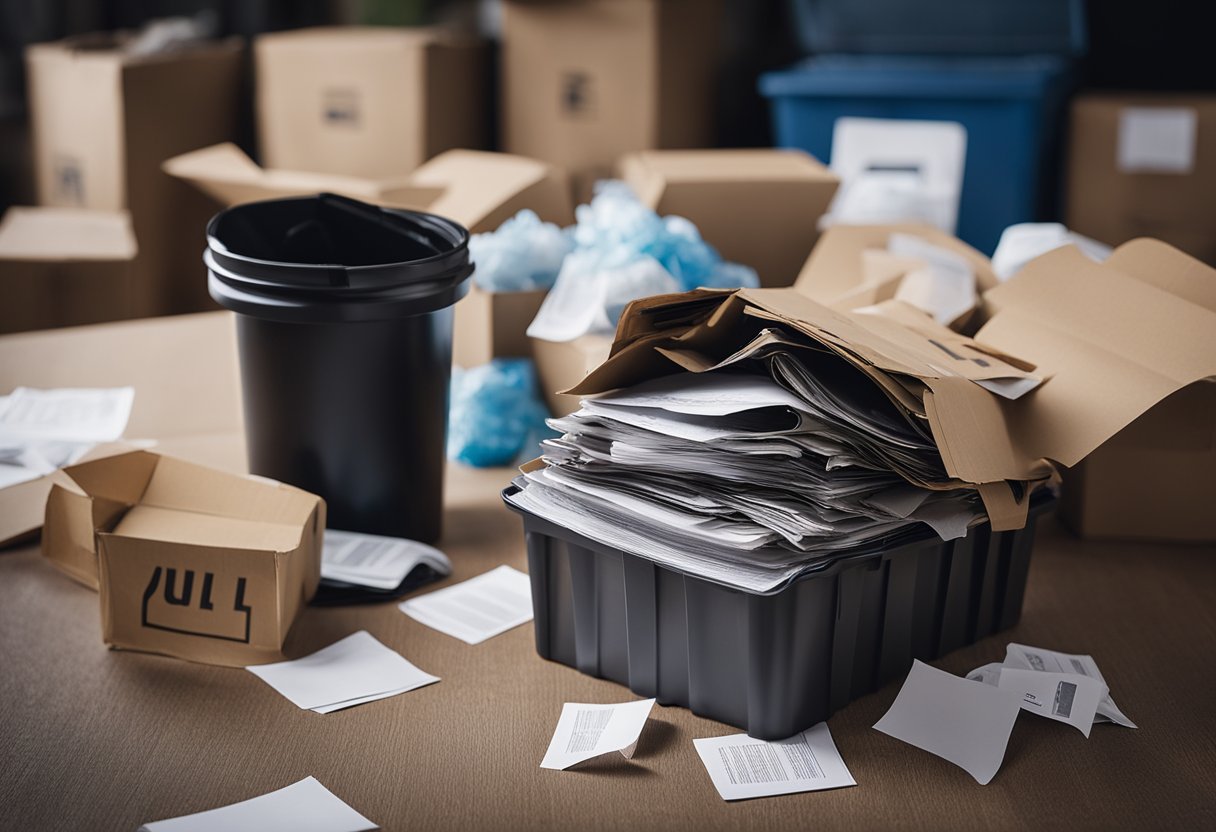
As someone who is interested in recycling, it is important to know the basics of paper recycling. Recycling paper is an important way to reduce waste and conserve natural resources.
The recycling process begins with collecting paper from various sources such as curbside recycling programs, drop-off locations, and recycling centers. Once collected, the paper is transported to a recycling facility where it is sorted and processed.
At the recycling facility, the paper is sorted by grade and type. The sorting process involves separating paper based on its quality, color, and texture. Once sorted, the paper is then shredded into small pieces and mixed with water to create a pulp.
The pulp is then screened to remove any contaminants such as staples, paper clips, and plastic. Once the contaminants are removed, the pulp is cleaned and de-inked to remove any ink, glue, or other substances.
After the de-inking process, the pulp is then pressed and dried to remove any excess water. The dried pulp is then rolled into large sheets and sent to paper mills where it is used to create new paper products.
In conclusion, recycling paper is an important way to reduce waste and conserve natural resources. The process involves collecting paper from various sources, sorting and processing it, de-inking and cleaning it, and using it to create new paper products.
Challenges in Recycling Paper with Ink
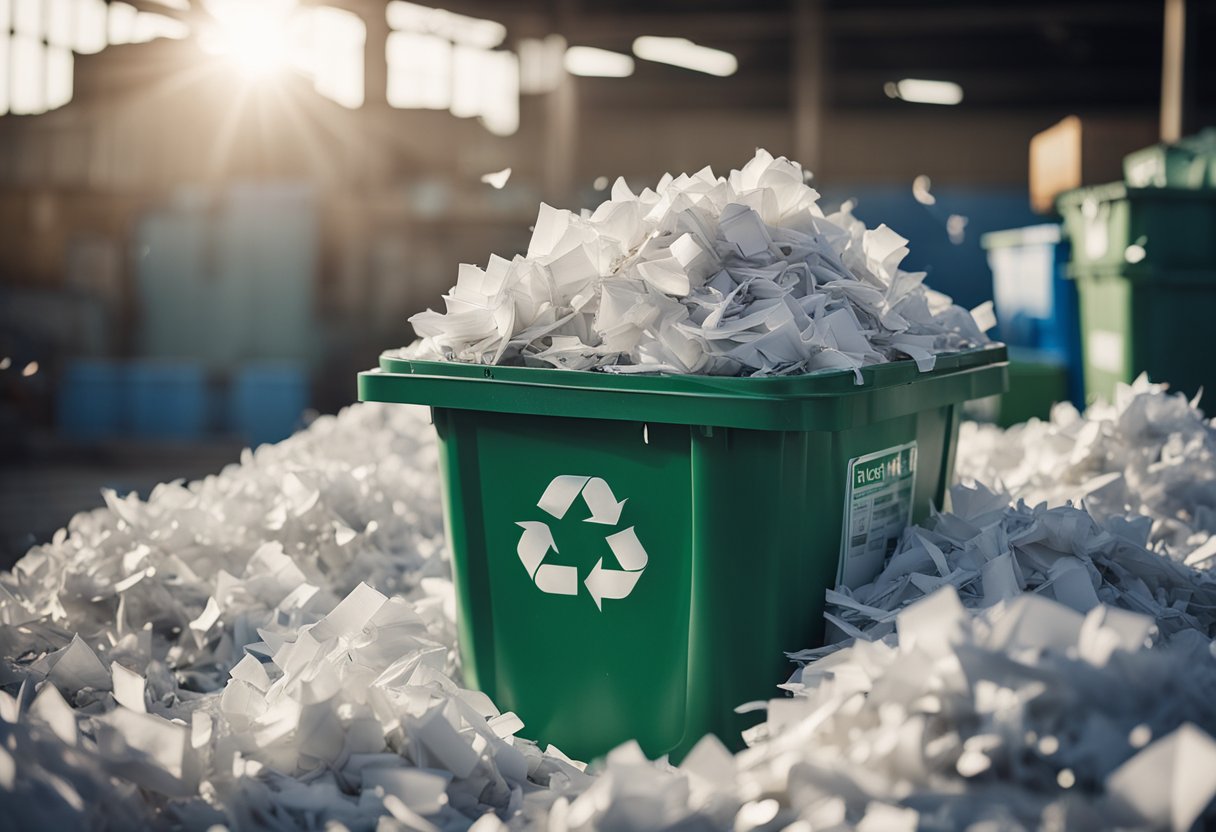
Recycling paper with ink is a common practice, but it comes with some challenges. One of the most significant challenges is the presence of contaminants in the paper. Contaminants such as adhesives, glue, oil, paint, wax, crayon, and other substances can make it difficult to recycle paper with ink. The presence of these contaminants can result in poor quality recycled paper, which is not suitable for many applications.
Another challenge in recycling paper with ink is the presence of laminated, sticky, or glossy coatings. These coatings make it difficult to remove the ink from the paper, and the paper cannot be recycled without removing the coating. Water-resistant coatings are also a challenge because they prevent the ink from being removed from the paper.
Shredded paper is another challenge in recycling paper with ink. While it is possible to recycle shredded paper, it is difficult to remove the ink from the small pieces. Shredded paper also tends to be contaminated with other materials, which can make it difficult to recycle.
Waxed paper is another challenge in recycling paper with ink. The wax coating prevents the ink from being removed from the paper, and the paper cannot be recycled without removing the wax.
In conclusion, recycling paper with ink is possible, but it comes with some challenges. Contaminants, laminated coatings, shredded paper, waxed paper, and water-resistant coatings are all challenges that must be overcome to recycle paper with ink. By understanding these challenges, we can work to improve the quality of recycled paper and reduce waste.
Types of Paper and Their Recyclability
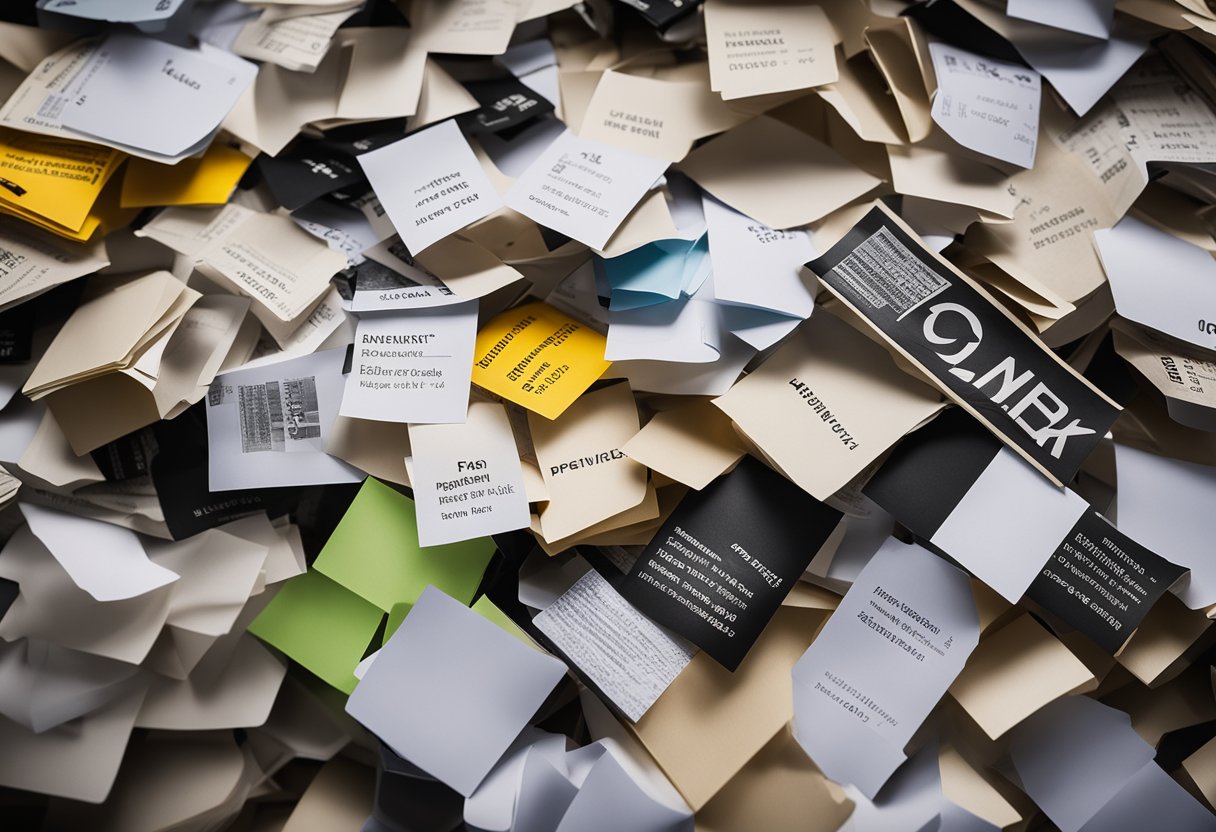
As a general rule, paper can be recycled multiple times, but it’s important to know that not all types of paper can be recycled. Some types of paper are not recyclable due to their composition, while others may have contamination issues.
Here are some common types of paper and their recyclability:
-
Recyclable Paper: Recyclable paper includes office paper, newspapers, magazines, leaflets, printer paper, envelopes, brown paper, and brown paper bags. These types of paper are generally recyclable and can be processed into new paper products.
-
Non-Recyclable Paper: Non-recyclable paper includes greasy paper, wax paper, pizza boxes, disposable diapers, and parchment paper. These types of paper are not recyclable due to their composition and cannot be processed into new paper products.
-
Paper with Ink: Paper with ink on it can be recycled, but it’s important to note that not all types of ink are created equal. Water-based inks are easier to remove and do not affect the recyclability of the paper. However, oil-based inks and toner can be more difficult to remove and may affect the quality of the recycled paper.
-
Paper Towels and Napkins: Paper towels and napkins are not recyclable due to their contamination with food, grease, or other liquids. These paper products cannot be recycled and should be disposed of in the trash.
-
Thermal Paper: Thermal paper, such as receipts, cannot be recycled due to the chemicals used in the printing process. These types of paper should be disposed of in the trash.
-
Paper Cups and Plates: Paper cups and plates are generally not recyclable due to their coating, which makes them difficult to process. These types of paper products should be disposed of in the trash.
In conclusion, it’s important to know what types of paper can and cannot be recycled to ensure that we are properly disposing of our waste. By recycling the right types of paper, we can help reduce waste and conserve resources.
Impact of Paper Recycling on Environment
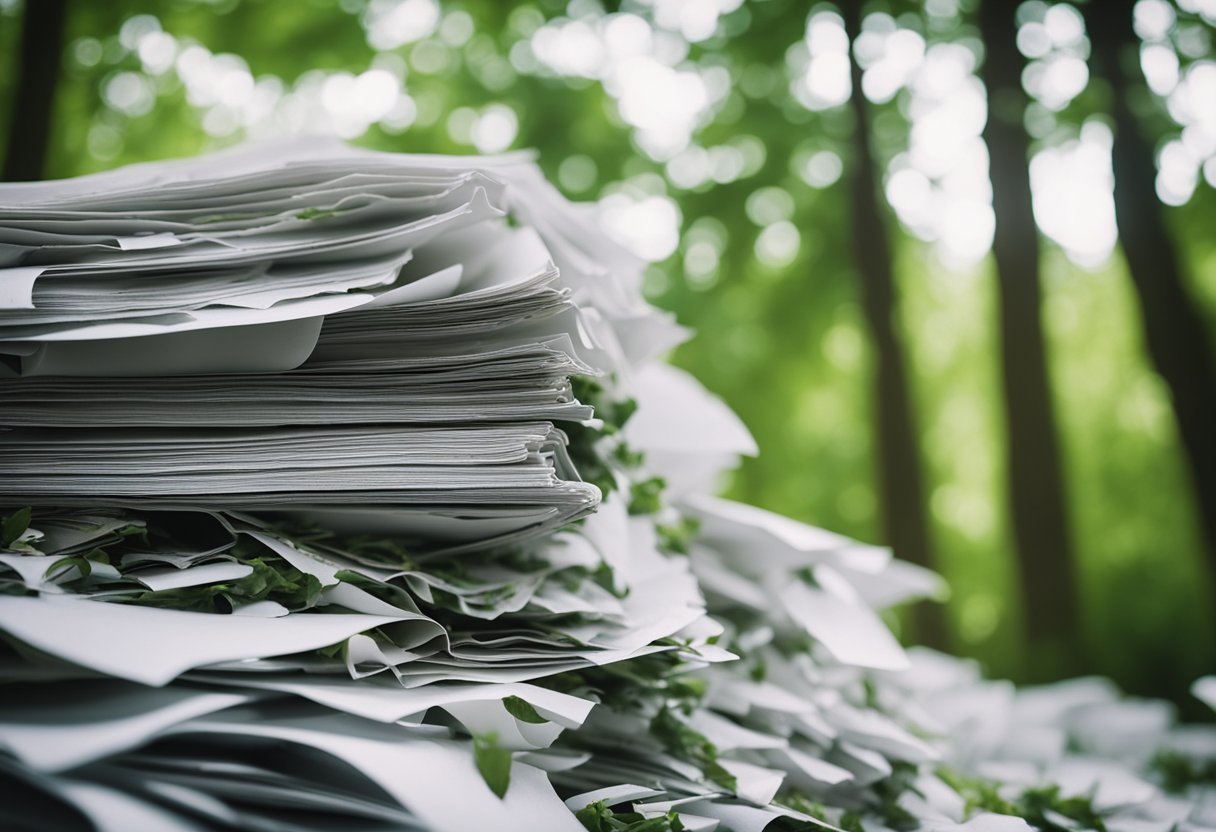
As an environmentally conscious individual, I believe that paper recycling is an essential step towards sustainable living. Recycling paper helps to reduce the number of trees that are cut down for paper production. According to Insightful Recycling, recycling one ton of paper can save up to 17 trees. This means that we can save a significant amount of natural resources by recycling paper. Moreover, recycling paper also helps to reduce the carbon footprint associated with paper production.
Paper recycling also has a positive impact on the environment by reducing the amount of waste that ends up in landfills. When paper is not recycled, it ends up in landfills where it decomposes and releases methane gas, a potent greenhouse gas that contributes to global warming. Recycling paper helps to reduce the amount of waste that ends up in landfills, thereby reducing the amount of methane gas released into the atmosphere.
The process of paper recycling also uses less energy and chemicals compared to the production of new paper. According to Printing for Less, recycling one ton of paper can save up to 4,100 kWh of energy. Moreover, the production of new paper requires the use of chemicals such as chlorine, which can be harmful to the environment. Recycling paper helps to reduce the amount of energy and chemicals used in paper production, thereby reducing the negative impact on the environment.
In conclusion, paper recycling has a significant positive impact on the environment. It helps to reduce the number of trees cut down for paper production, reduces waste in landfills, and reduces the amount of energy and chemicals used in paper production. As an environmentally conscious individual, I believe that we should all make an effort to recycle paper to reduce our carbon footprint and protect the environment.
Advanced Recycling Techniques
Recycling paper with ink on it can be a challenging task. However, advanced recycling techniques have made it possible to recycle such paper with ease. These techniques involve the use of specialized machinery and processes that can separate the ink from the paper fibers.
One such technique is the flotation de-inking process. In this process, the paper is mixed with water and chemicals to create a pulp. Air is then introduced into the mixture, causing the ink particles to separate from the paper fibers and rise to the surface. The ink particles are then skimmed off, leaving behind clean paper fibers that can be used to make new paper products.
Another technique is the wash de-inking process. In this process, the paper is soaked in water and chemicals to create a pulp. The pulp is then washed with water and chemicals to remove the ink particles. The clean paper fibers are then used to create new paper products.
Recycling machinery plays a crucial role in these advanced recycling techniques. The machinery used for flotation de-inking and wash de-inking processes are specialized and designed to handle paper with ink on it. These machines are equipped with advanced sensors and controls that ensure the separation of ink particles from paper fibers is done efficiently and effectively.
Coated paper is another type of paper that can be recycled using advanced recycling techniques. Coated paper is paper that has been coated with a layer of plastic or wax to make it more durable. The coating can make it difficult to recycle the paper, but specialized machinery can handle this type of paper and separate the coating from the paper fibers.
Recycling paper with ink on it can also be used to create papercrete and paper composites. Papercrete is a building material made from recycled paper and cement. Paper composites are materials made from recycled paper and other materials such as plastic or wood fibers. These materials are lightweight, durable, and environmentally friendly.
In conclusion, advanced recycling techniques have made it possible to recycle paper with ink on it. These techniques involve specialized machinery and processes that can separate the ink from the paper fibers. The resulting clean paper fibers can be used to create new paper products, as well as papercrete and paper composites.
Practical Tips for Paper Recycling
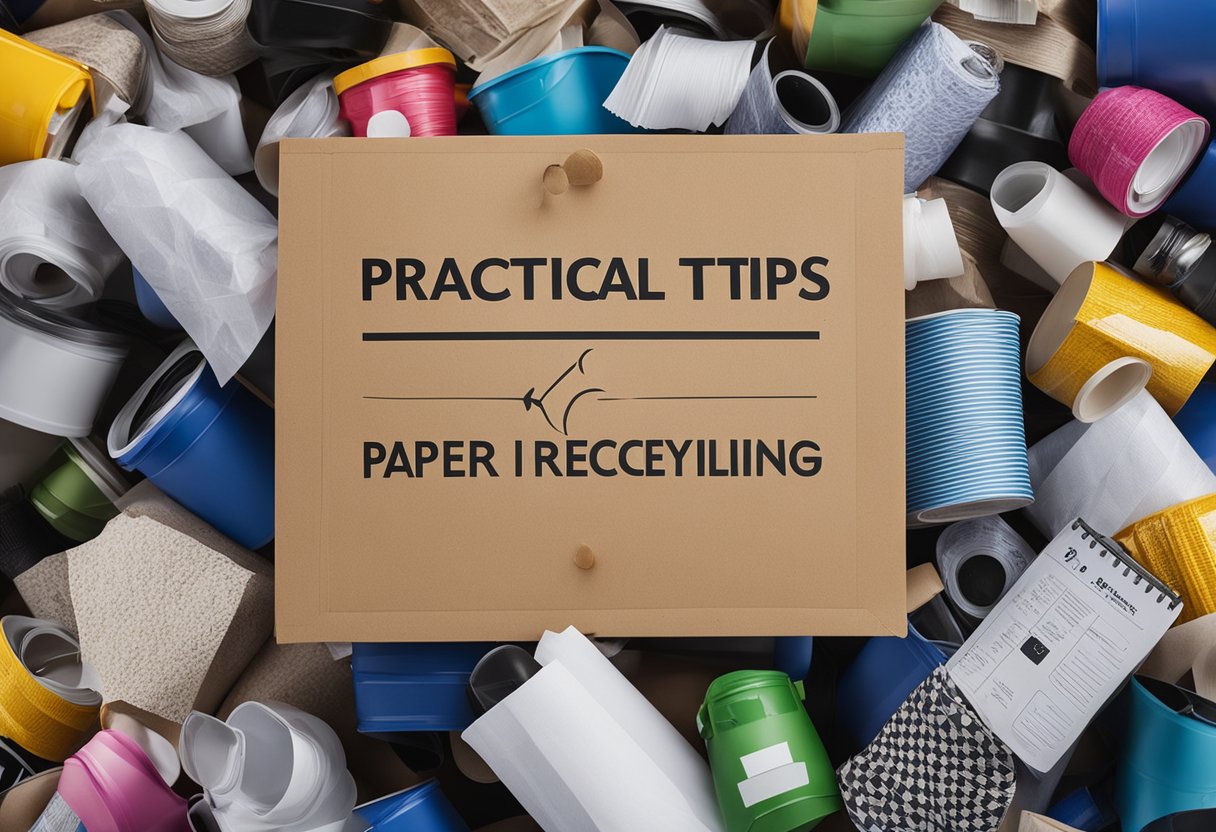
As someone who cares about the environment, I always try to recycle paper whenever possible. But what about paper with ink on it? Can it be recycled? The answer is yes, but there are a few things to keep in mind.
First, it’s important to separate paper from other materials like foil, glitter, ribbons, bows, and sellotape. These items can’t be recycled with paper and can contaminate the recycling process. Similarly, sticky notes and personal information should be removed from paper before recycling.
When recycling paper, it’s also important to pay attention to the type of paper being recycled. While most paper with ink on it can be recycled, there are some types of paper that can’t be recycled. For example, paper that has been coated with plastic or has a glossy finish can’t be recycled with regular paper. Additionally, paper that has been contaminated with food or other substances can’t be recycled.
Recycling paper has many benefits, including reducing the amount of waste that ends up in landfills and conserving natural resources like trees and water. It’s also an eco-friendly practice that can help reduce your carbon footprint.
If you’re unsure about whether a particular type of paper can be recycled, check with your local recycling center or visit a website like Intermedia Arts or Tips for Recycling for more information.
By following these practical tips, you can help ensure that your paper recycling efforts are effective and environmentally friendly.
Frequently Asked Questions
What types of paper cannot be recycled?
There are several types of paper that cannot be recycled. These include waxed paper, shredded paper, wrapping gift paper, paper coated with plastic, receipts, sticky paper, and any paper contaminated with food or other liquids like pizza boxes, milk & juice cartons, napkins & tissues, paper towels, and toilet paper. Almost Zero Waste has a comprehensive list of paper types that cannot be recycled.
Can paper with ink on it be recycled?
Yes, paper with ink on it can be recycled. While some recycling centers have restrictions on what types of paper they’ll accept, most are happy to take paper with ink on it. It may not be able to be recycled back into paper products, but it can still be recycled into other materials like cardboard. Tips For Recycling has an article that explains this in more detail.
How is ink removed in paper recycling?
Ink is removed from paper during the recycling process by a process called de-inking. There are four basic types of de-inking processes or stages: de-inking by floatation, de-inking with bleach, de-inking with enzymes, and de-inking by washing. Artltdmag has a detailed article that explains these processes.
Can you recycle glossy paper?
Yes, you can recycle glossy paper. However, it may not be accepted at all recycling centers. It is best to check with your local recycling center to see if they accept glossy paper. Green Living Tips has an article that explains this in more detail.
Can you recycle shredded paper?
Yes, you can recycle shredded paper. However, it is best to put shredded paper in a paper bag before putting it in the recycling bin. This helps prevent the shredded paper from getting mixed up with other types of paper and makes it easier to recycle. Eco-Cycle has more information on how to recycle shredded paper.
Can inkjet paper be recycled?
Yes, inkjet paper can be recycled. However, it is important to remove all staples, paper clips, and other non-paper items before recycling. This helps prevent contamination and makes it easier to recycle. Recycling.com has more information on how to recycle inkjet paper.

Hi, I’m Sal Muller of Tooltrip.com. My DIY experience led me to understand essential power tools for home projects. Tooltrip.com guides enthusiasts and professionals in choosing right tools for any job. I provide concise top tool reviews for easier, efficient DIY.

